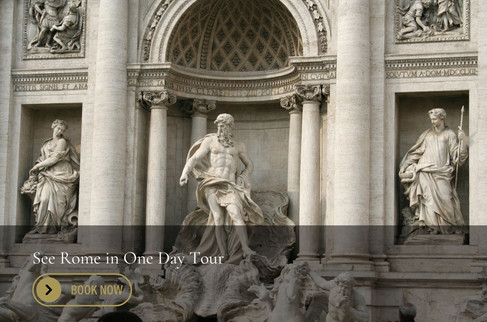— Does punishment come to the good?
One of the first things that enchant tourists when visiting Rome is the abundance of culture and the richness of symbols and history. A tour of Rome or Vatican Tour are never complete without listening to the stories behind every history piece.
The best way to witness the greatness of the city is by a See Rome in a Day tour, but if you are an art enthusiast, getting lost in the Vatican museums might be the best thing to do. Even for the most educated of us, it can be quite hard to know what we are looking at all the time. It’s not the case of The Laocoon and His Sons statue in the Vatican Museum, which stands out through its splendor.

The statue, also known as the Laocoon Group, has been one of the ancient trademarks, ever since it was excavated in Rome in 1506. The statue illustrating a near life-size man and his two young sons being attacked by snakes has been placed on public display in the Vatican, where it remained to this day.
Even if it was incomplete by the time it was discovered, the statue stirred curiosity when some of the biggest artists of that time, including Michelangelo were called to the site. The statue, believed to be an ancient Greek statue, was soon displayed in the Belvedere Gardens at the Vatican. It became so famous that it effaced both the characters and the story behind it.
The legend says that Laocoon was a famous Trojan priest, but the story of the scene illustrated in the statue varies from story to story. Some say that Laocoon was hated by Poseidon because he and his wife have conceived their babies inside his temple, while others say he was punished because he tried striking the Trojan horse with a spear.
One day, while Laocoon and his two sons were trying to sacrifice a bull in the name of Poseidon, two giant snakes sneaked unexpectedly and entwined around the three men. There is more than one version for this part of the story as well; some say the serpents killed only his sons, leaving Laocoon alive to suffer after the loss of his two children. Others say that all three men were killed by the serpents.
Depending on the interpretation of the story behind the statue, Laocoon’s death might symbolize his punishment for being right, or for doing wrong. Either way, the statue itself catches the feeling of fear, pain and despair perfectly. We witness a scene of torment, of incredible fear and ultimately, death.
While not all agree on the story behind the “Laocoon and his Sons” statue, there is one thing accepted by everyone – the statue is a masterpiece, a fantastic reinterpretation of ancient times and Gods’ fury.
Whether you’re visiting for two days or ten days, your Vatican City tour should definitely include a visit at the Vatican Museums where you should make sure not to miss the Laocoon Group. One of the best history pieces, the statue has become a symbol of the city.





